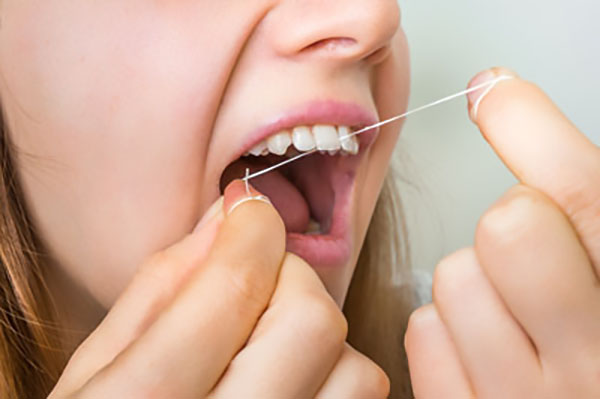Common Signs of Gum Disease

Gum disease is also known as periodontal disease. This is a condition that causes inflammation of the tissue around the patient’s teeth. It is caused by bacteria building up in the area. Keep reading to learn about some of the symptoms of this condition.
About gum disease
Periodontal disease is a progressive condition, meaning it gets worse over time. In the end, it can cause the teeth to be lost. It starts out as gingivitis, a bacterial infection. That causes the gums to become inflamed.
The toxins released by the plaque can destroy the jawbones and the gums. This will negatively affect how a person speaks, looks and chews. No matter what stage a patient is in, immediate treatment is required. There are several signs of each of the stages.
Swelling, redness or pain
The gums may look inflamed or feel painful. The infection can quickly spread and stopping it is critical. Without treatment, it can enter the bloodstream. Then it will affect other body parts.
Bleeding is another sign that patients might notice. Brushing or flossing can irritate the inflamed gums. However, even just eating can cause issues. Patients who are going through menopause or pregnancy can also have bleeding gums.
Bad breath
There are many causes of bad breath besides gum disease. For example, some foods may be very pungent. The smell can come from the lungs, back of the tongue or stomach. Tobacco use or smoking can also cause bad breath.
Sometimes, food particles are caught between the patient’s teeth and move under the gumline. However, patients who have gum disease are more likely to suffer from bad breath. With the pockets formed by the disease, food particles can become trapped there. This can be a red flag.
Receding gums and pus pockets
Gum disease can cause the tissue to move away from the teeth. It happens when the bacteria have damaged the tissue. This makes the teeth look longer. Then the smile will appear to be “toothy.” With treatment, the patient may receive gum grafts to restore the smile.
In more advanced stages, pus may appear between the teeth. The body makes this when it needs to fight off an infection. Antibiotics may be used before and during treatment. This can kill off harmful bacteria.
Loose teeth
In the more advanced stages, the teeth will start to become looser. The teeth will then shift around in the mouth. This happens when the bone tissue is destroyed. It can then no longer properly support the teeth. At this stage, the patient will most likely need to undergo several advanced treatments. The goal will be to save the remaining teeth.
Visit a dentist for gum disease treatment
If you are experiencing any of the symptoms above, you should seek treatment immediately. Your overall health can be negatively affected by this condition. The earlier that you catch gum disease, the more reversible it is. The right home care can go a long way toward treating it.
Request an appointment here: https://dentistryonpark.com or call Dentistry on Park, LLC at (781) 443-8131 for an appointment in our Stoughton office.
Check out what others are saying about our services on Yelp: Read our Yelp reviews.
Recent Posts
Any dental restoration can be challenging to budget for. Discussing the particulars with your dentist can help you get a clear idea of the final amount. Understanding the specific elements of your dental procedure is important in setting your budget. Here is a comprehensive guide for determining the cost of your dental restoration.This dental restoration…
Preventative dental care is important for optimal oral health. It prevents bad breath, oral disease, tooth loss, among others.The enamel is the outermost part of the tooth. It is a white visible part above the gum. It is the part seen when you smile. The enamel is also the strongest layer of the tooth. It…
Seeing a general dentist for regular checkups should be part of your dental care routine. This dental professional can help maintain and even improve your teeth and gum health. Asking the right questions can help you know more about proper oral care. Below are some of the questions you can ask your general dentist during…
Preventative dental care refers to all the ways you can maintain the health of your teeth and gums, which will ultimately help prevent more severe issues down the road. One great way to provide this type of care is through treatments, including scaling and root planing, periodontal therapy, and laser gum surgery. The following are…


